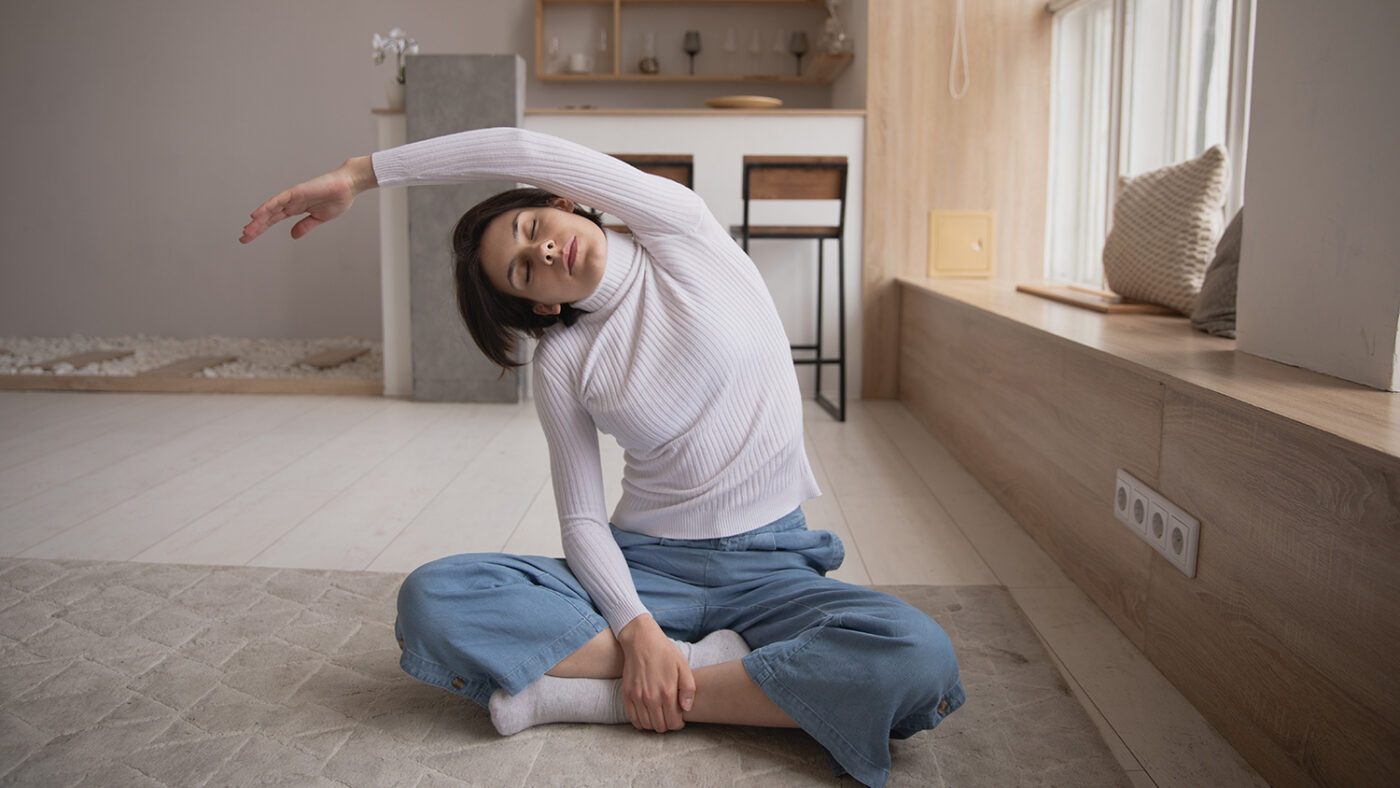Mindfulness
How to Fit in Regular Exercise
Our mental and physical health benefit from regular exercise. It’s an excellent way to release tension, raise energy and improve our outlook on life. Sometimes life gets a bit hectic and it’s easy to let exercise become a second, third or even a last priority. The challenge is to incorporate exercise into our lives in such a way that even when we’re busy we can squeeze in a 5-10 minute session – without gym gear! One option is do bursts, otherwise known as intermittent exercise.
So how does intermittent exercise work?
The idea is that you do a few short bursts of exercise multiple times throughout the day. Mix it up with a variety of moderate to vigorous intensity sessions, such as some yoga asanas in the morning, a brisk walk at lunch time and some lunges or Foundation Training at your desk. Remember that every bit of exercise adds up and when you do bursts at work it has the added benefit of breaking up the sitting or repetitive nature of our tasks.
What are the benefits of intermittent exercise?
Just like with all types of exercise, intermittent exercise provides many benefits for our mental and physical health. There have been a number of studies conducted exploring the effects of intermittent exercise which summarised below:
Physical benefits
- Decreased triglyceride levels (a type of fat found in your blood)
- Increased levels of good cholesterol (HDL)
- Reduced total cholesterol
- Significantly improved fitness levels
- Improvements in glycosylated haemoglobin (a marker for long-term blood sugar control)
Mental benefits
- Reduced levels of anxiety
- Improved focus
- Enhanced mood
- Boosted self-confidence
How to get started
The key to success is to make it achievable. Think of how you can incorporate intermittent exercise into your routine so it’s something you will do each day and multiple times a day. Making it fun can also you looking forward to the 10 minute super session! And importantly, mix it up. Remember we’re aiming to for a mix of moderate to vigorous, include some strength training as well as stretching and cardio.
Moderate intensity is something that makes it difficult to carry a conversation.
Vigorous intensity steps it up a notch. For some this will mean going from a moderate walk to a jog.
The idea is that these intermittent exercises don’t require special equipment. For example, if you’re doing triceps dips you could use a chair or bench. You could even do push ups against a wall, especially if what you’re wearing isn’t suitable to do conventional push ups. I love Foundation Training because it can be done while standing and with minimal space and it provides me with a balanced exercise routine that incorporates strength, breathwork, decompression and a bit of cardio. It’s also perfect to do in chunks – intermittently!
In the end aim for about 30-45 minutes of combined intermittent exercise each day. You’ll really notice the difference.
You could try some of these below or create your own routines. Be creative and adjust the intensity and the exercise to your ability and needs.
1 Cardio
Incorporate a 10 minute walk at moderate intensity into your day. This will get your heart rate up and will definitely help clear your mind. If you’re a morning person, get up a little earlier and pound it out! If that’s not your think then make your lunch break your walk break! Keep a pair of runners at work & then head out for 10 minutes. You will feel invigorated and ready to tackle the world! You can of course make this into a quick jog if this is your passion.
2 Strength training – legs
Aim for 45 seconds for each exercise, with 15 seconds rest in-between each, then repeat the set once more.
Squats: With your feet hip-width apart and pointing forward, lower down into a squat position, ensuring that your back is flat and that your tailbone is angled towards the floor. You may wish to use a chair for precaution, lightly tapping it before driving back into a standing position.
Lunges: Stand straight with your feet hip-width apart. Extend one foot behind you and plant your toes firmly on the floor. Bend your back knee and lower down into a lunge position (making sure your knee doesn’t fall over your foot). Rise and return to your original position, repeating the motion on the other side.
Wall sit: With your feet hip-width apart and your back flat against the wall, lower down as if sitting on an invisible chair. Tuck your tailbone under and ensure that your legs are positioned with your feet directly below your knees and your thighs point straight out in front of you. Hold for 45 seconds.
Single leg calf raises: Lift one knee so that your thigh is perpendicular to your torso. On your standing leg, raise onto your toes and then lower back down. You may use a surface nearby to lightly steady yourself. Repeat for the full 45 seconds before swapping legs.
Single leg calf raises (other side): Complete the exercise above on the opposite leg.
3 Arm and core strength
This final round will focus on building strength in your arms and your core. As with the previous rounds, aim for 45 seconds for each exercise, rest for 15 seconds, and then repeat the set of five exercises.
Triceps dips: Using a chair, plant your hands firmly on either side of the seat as you face outwards. Shift your pelvis so there is a gap between your body and the edge of the chair, and bend your knees at a 90-degree angle. Bend at your elbows and lower your body until you are just hovering above the floor, then drive through your triceps back up into your original position.
Push ups: There are several ways you can modify your push ups to suit your fitness level. If completing them on your toes is not possible, you can lower to your knees or even plant your hands on a wall for a vertical alternative while you build your strength.
Plank side walk: Get into a plank position with your hands firmly planted under your shoulders and your legs extended straight behind you. Step your left arm and leg out to the side and follow with your right side. Then complete by moving in the opposite direction. If this is too much, remain in a stationary plank position or lower to your knees.
Bicep curl to press: You can use household items for this exercise, such as bottles of milk or washing detergent. Bend both arms at the same time, keep your elbows by your side as you curl your weight towards your chest, then drive your arms straight above your head. Reverse the movement and repeat.
It’s also worthwhile checking out the Foundation Training website and YouTube channel for their routines. They have lots of fabulous tutorials and sessions that suit all fitness levels and the techniques taught can be incorporated into everyday living thereby preventing injury when doing basic tasks.
And lastly, listen to your body. Speak to your health professional if you have specific injuries and conditions that need that a little bit of extra attention or supervision.
We weren’t all born to be elite athletes, but we can do our bit in keeping our body and mind strong and healthy. Keep playing, keep moving and have fun in the process.
Love Vesna

